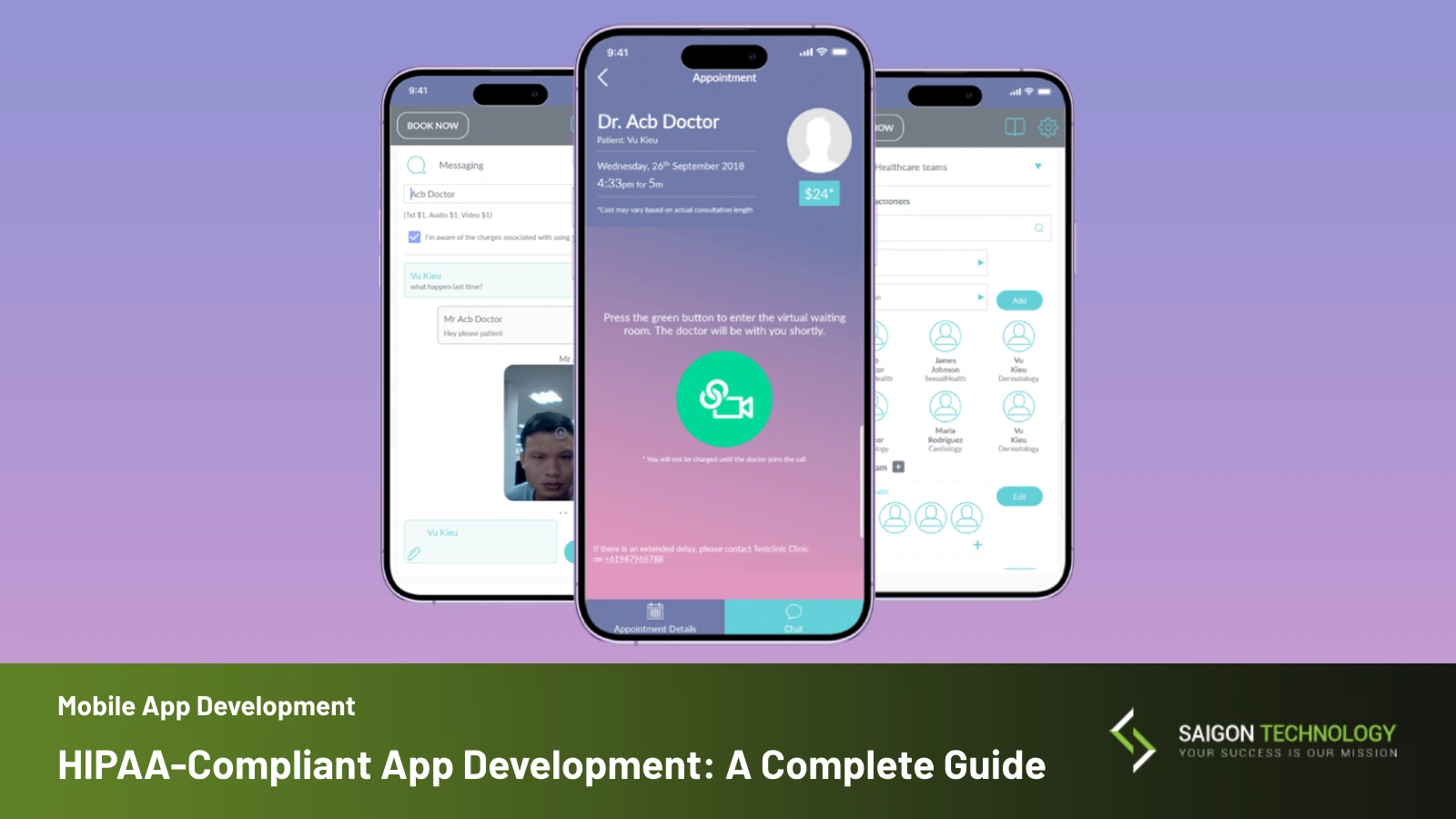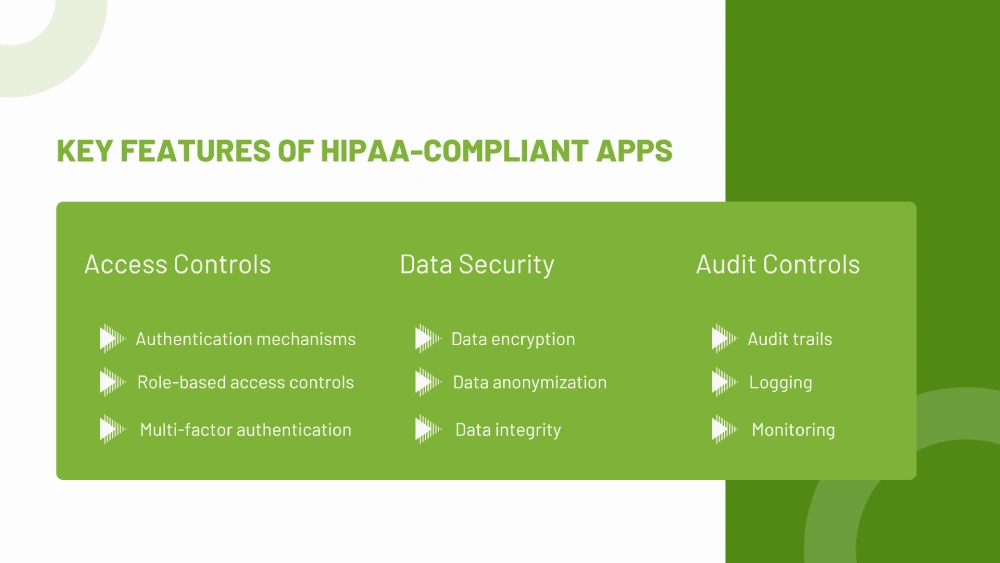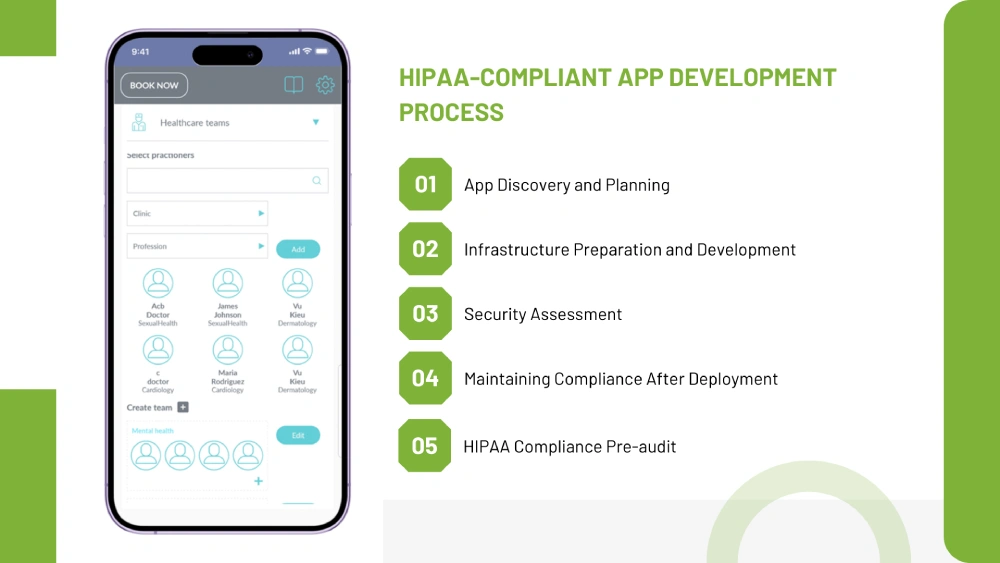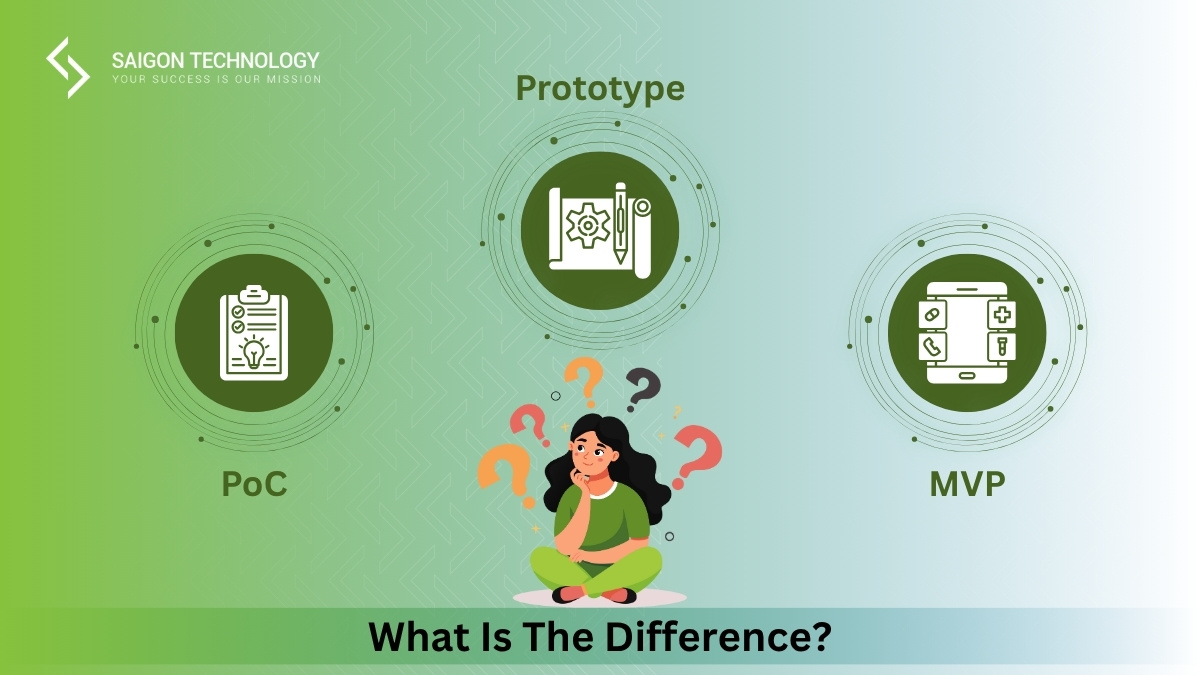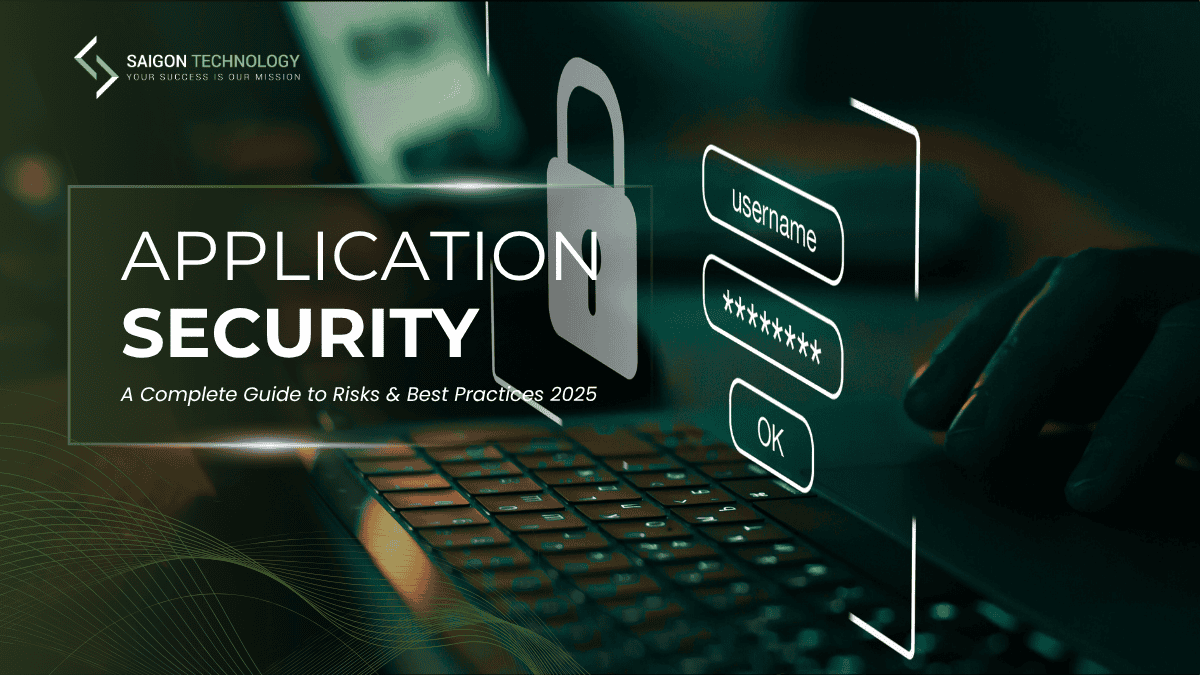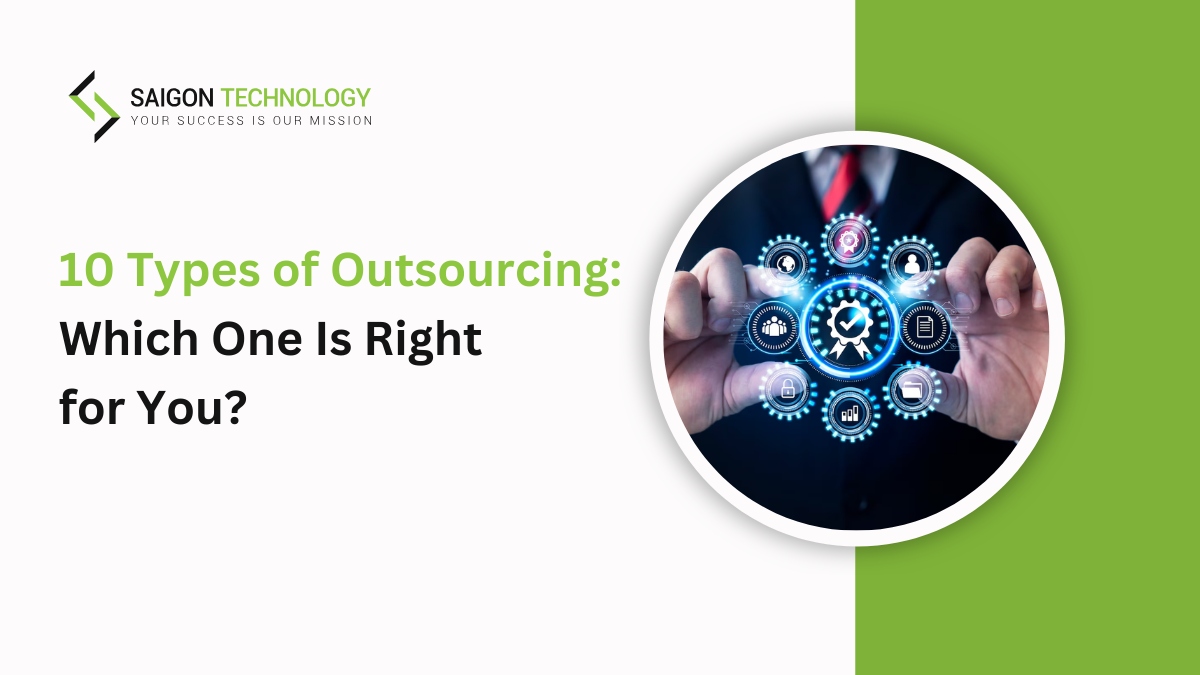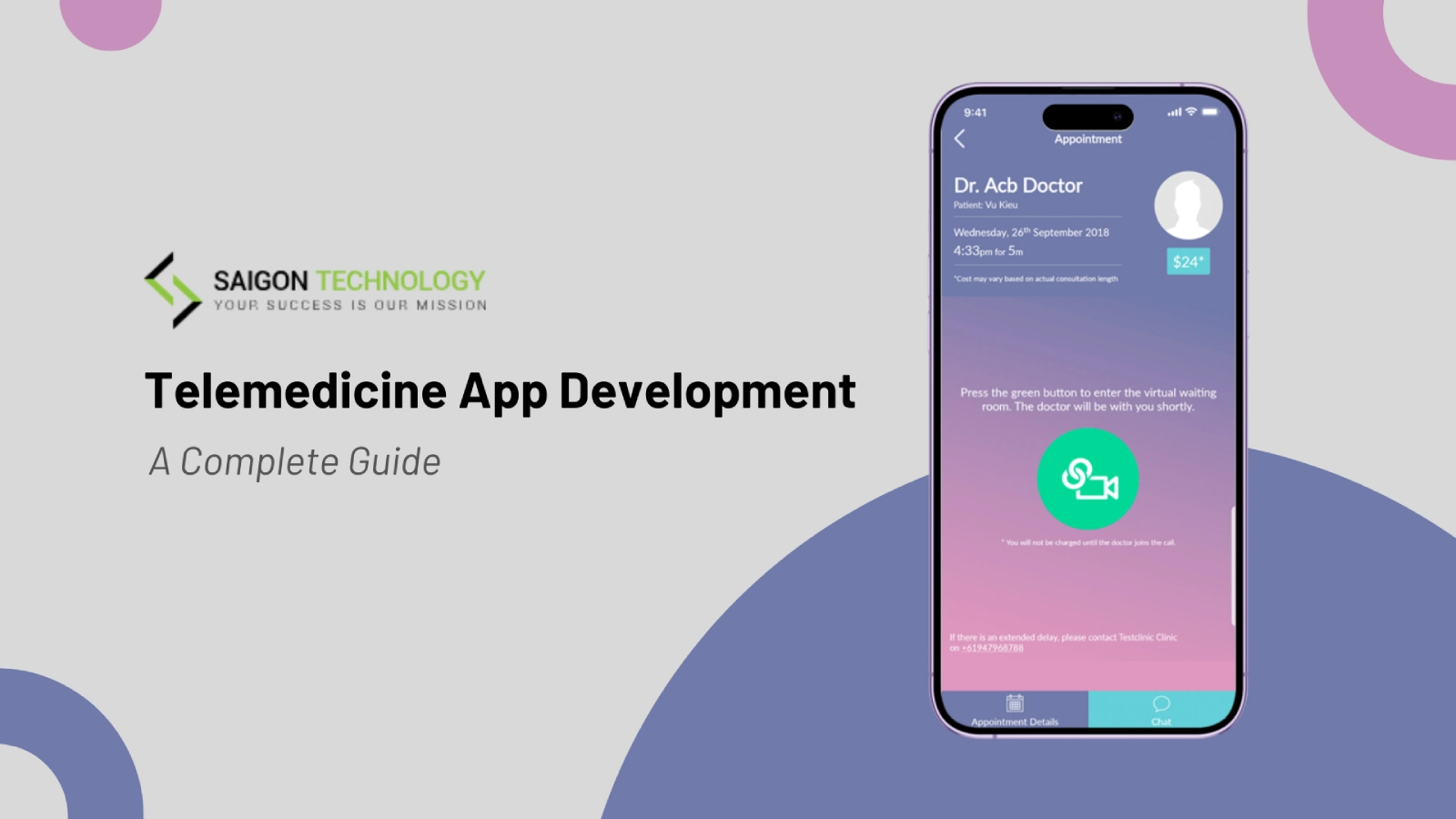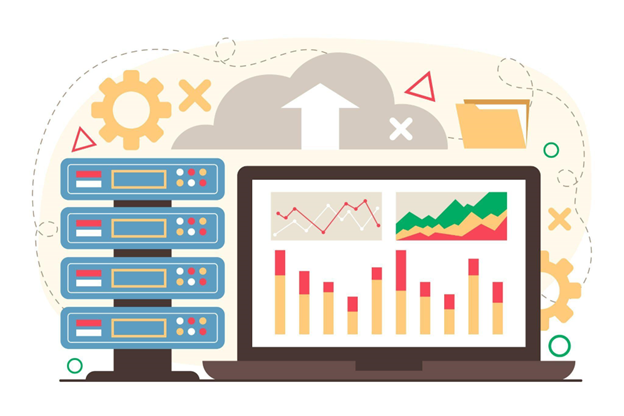HIPAA-compliant app development ensures patient privacy. You have to follow strict HIPAA regulations when developing healthcare software. If you do not comply, you will face costly data breaches and even legal trouble. The Texas Health and Human Services Commission faced a $1.6 million penalty for multiple violations. Do not become someone like this!
Healthcare providers and patients care a lot about security. Telehealth services and digital health solutions are on the rise. Thus, PHI (Protected Health Information) has become more important than ever. If you are planning healthcare app development, learn the rules first. This article will walk you through everything you need to know to stay compliant. Let’s read on to discover!
What is HIPAA and Its Importance?
HIPAA (Health Insurance Portability and Accountability Act) is a US law with security and privacy rules related to health information. HIPAA has three main purposes:
- First, the law ensures workers can keep their health insurance when they change or lose jobs.
- By standardizing electronic transactions, the law reduces healthcare costs.
- Patients and healthcare providers can avoid fraud, waste, and abuse. They can also experience access to long-term care and health insurance.
Health Insurance Portability and Accountability Act (HIPAA) regulates how to handle healthcare data. The covered entities under HIPAA include:
- Healthcare providers, like doctors, dentists, pharmacies, and clinics.
- Health plans, like health insurance companies, government programs, and HMOs.
- Clearinghouses that convert nonstandard health data into standard formats.
A covered entity must have a written contract to outline their duties with business associates. All these parties process PHI (Protected Health Information). They follow strict rules to protect individually identifiable health information. As they handle electronic data exchange, they ensure security in telehealth services and other digital healthcare solutions.
HIPAA includes a set of rules. Here is what you must follow:
- HIPAA Privacy Rule: This rule set protects your patients’ PHI while allowing secure electronic data exchange for their care.
- HIPAA Security Rule: This rule set offers requirements to keep ePHI safe and accessible. It aligns closely with application security best practices, focusing on protecting sensitive data through encryption, access control, and secure system design.
- HIPAA Breach Notification Rule: Someone may share or use PHI without permission. It’s what we call a breach. In this case, you have to inform affected patients, HHS, and sometimes the media.
HIPAA prioritizes patient privacy. It also supports anonymizing data to reduce the risks of cyberattacks. When healthcare providers comply with HIPAA, they show their commitment to secure practices. Security is especially important in the digital age, where data breaches are common.
Common Myths and Misconceptions in HIPAA-Compliant App Development
HIPAA compliance is popular now. However, because it includes many rules, some businesses misunderstand how it really works. Let’s clear up!
Common Myths
Some common myths about HIPAA compliance application development are:
- HIPAA only applies to hospitals: This concept extends beyond hospitals. Any covered entity or business associate that handles PHI data must follow this law.
- All health apps need HIPAA certification: Not every health app requires HIPAA secure app certification. If the app doesn’t handle PHI data, HIPAA certification may not be necessary.
- Encryption makes the app HIPAA-compliant: Encryption doesn’t automatically make your app compliant. HIPAA best practices require a combination of security measures like access controls and audit logs.
- Compliance is a just one-time effort: HIPAA compliance rules demand ongoing efforts. For example, you need regular audits and updates to the app architecture to ensure compliance.
Common Misconceptions in HIPAA-Compliant App Development
To understand the ins and outs of HIPAA, you need to become familiar with its conceptions first. For example:
- Data storage: You need to follow the data storage practices that align with HIPAA requirements. The rule here prioritizes information integrity, availability, and confidentiality.
- Encryption: Data encryption under HIPAA scrambles ePHI. Then, it can only be accessed by authorized individuals with the encryption key.
- Third-party services: Some third-party HIPAA entities are data analytics businesses, software vendors, or cloud service providers. Whichever you choose, your partner must comply with HIPAA-as-a-service backend rules. Non-compliant services may lead to data fraud.
So, what do you really need for compliance? Healthcare apps must implement security measures. Before starting, developers must also establish a clear process for data integrity. But, what are the best security measures? How to develop a HIPAA-compliant app properly? Check out the following sections for the answers!
Key Features of HIPAA-Compliant Apps
The rules can be complex. Yet, it can be much easier if you stick to the key features. Let’s see what you should work on!
Access Controls
These controls ensure that only authorized users can access sensitive data. When developing a HIPAA-compliant app, implement the following features:
- Authentication mechanisms: Usernames and passwords confirm that the right users are accessing data.
- Role-based access controls: These controls ensure users can only access the information they need based on their role.
- Multi-factor authentication: This feature requires two forms of verification. For example, you can implement both passwords and fingerprints to confirm the user’s identity.
Data Security
Security is a top priority for any HIPAA-compliant app. Effective measures ensure you comply with PHI data standards. You can consider these methods:
- Data encryption: Encryption at rest protects data stored on devices or servers. Meanwhile, encryption in transit safeguards as it moves between devices or servers.
- Data anonymization: This technique removes or masks personally identifiable information (PII). This way, you can guarantee patient privacy because the patient’s data remains anonymous.
- Data integrity: Data should be accurate and reliable throughout its entire life. This feature focuses on its consistency and accuracy.
Audit Controls
You need audit controls to track and monitor access to sensitive data. The methods below will help:
- Audit trails: These records track who accessed healthcare data, what they did, when, and why. You will then have a detailed history of changes made to patient records.
- Logging: Application logging records events in an app, such as system errors, user actions, and other essential activities.
- Monitoring: Regular monitoring of audit logs helps you detect potential errors and breaches.
Other Features in HIPAA-Compliant App Development
HIPAA-as-a-service solutions require other features to enhance the app’s ability. For example:
- Secure messaging: This feature allows healthcare providers to communicate with patients or other professionals in a safe environment.
- Emergency access procedures: In cases of emergency, the procedures allow for authorized personnel to access PHI data quickly.
- Biometric recognition: If the app requires a higher level of security, biometric recognition would be best. You can try fingerprint and facial recognition.
- Vulnerability scanning: Regular penetration testing and vulnerability scanning help identify potential security issues.
Steps to Develop HIPAA-Compliant Apps
Developing a HIPAA-compliant app is a tricky task. You have to pay attention to security and privacy at every stage. This process requires a systematic approach. Let us explain it in detail!
1. App Discovery and Planning
You need a detailed plan to build a HIPAA-compliant app. This stage involves five tasks:
- Determine Necessity: Not every healthcare app has to comply with HIPAA. So first, you need to assess if your app belongs to this group. The answer depends on whether the app plans to handle PHI or not.
- BAA with Providers: If your app handles PHI, sign a Business Associate Agreement (BAA) with any third-party service providers. Then, they can access your sensitive data.
- Compliance Expertise: HIPAA includes many rules. Thus, you should work with a compliance consultant or an experienced development team. Your partner can help you ensure your app meets all necessary standards.
- Thorough Documentation: During the development process, you will deal with software architecture, encryption methods, and access policies. Remember to include all of them in detailed records. You will need this documentation to demonstrate compliance.
- User Roles and Permissions: Patients, physicians, and admins will access your app. So, you need to define their roles and corresponding access rights to PHI. The role-based access control helps restrict access to sensitive data.
2. Infrastructure Preparation and Development
Next, prepare infrastructure for HIPAA compliance application development. Here is what to do:
- Secure Infrastructure: You need a secure and redundant infrastructure for your project. A HIPAA-compliant cloud provider would be best. You can try Azure or AWS. Both offer robust security measures and compliance certifications.
- Network Security: You surely want to protect your network and servers from unauthorized access and threats. Firewalls and anti–malware are great tools. You can also consider intrusion detection/prevention systems (IDS/IPS).
- Data Encryption: Data at rest and in transit requires encryption. File-level and block-level encryption are ideal for performance optimization. They also ensure data security.
- Access Controls: User authentication and authorization are necessary here. Automatic logoff is popular, too, as it helps prevent unauthorized access when a device is left unattended. Biometric authentication also gains more attention these days because it enhances user convenience while adding an extra security layer. These features help control access to your app and its data.
- Emergency Access: Create a break-glass account for emergency access to PHI. Also, make sure to keep audit trails for accountability.
- Data Backup and Recovery: Data loss is a nightmare. Hence, establish procedures for data backup and recovery. You can then ensure business continuity in case of unforeseen events.
- Audit Controls: Record all interactions with ePHI. This way, you can easily track access and modification. The records even help identify potential security breaches.
- Secure Communication: Secure protocols like HTTPS and TLS can protect data in transit between the app and the server. Thus, you can prevent unauthorized interception.
- Integrity Controls: Data integrity and reliability are essential. Hence, you need to implement measures to prevent unauthorized alteration. Work on the destruction of ePHI, too.
- Breach Notification: Set up systems to quickly detect and notify users of PHI breaches. Make sure notifications comply with HIPAA regulations.
3. Security Assessment
When you build a HIPAA-compliant app, always prioritize security. The methods below will help you ensure your app stays secure all the time:
- Risk Evaluation: A role matrix enables you to evaluate risks linked to viewing, adding, deleting, or modifying ePHI.
- Vulnerability Assessment: Your app and its infrastructure require regular vulnerability and penetration testing. It’s the best way to pinpoint and address potential security weaknesses.
- Code Review: Vulnerabilities in your app can be encryption errors or cross-site scripting. You can perform automated and manual code reviews to ensure secure coding practices.
- Security Assessment: Review auditing and logging to track system activities and detect potential threats. Also, assess data validation and communication security to ensure data integrity.
- Obfuscation and Serialization: Obfuscation and serialization filtering protect sensitive data from unauthorized access. They conceal data structures so only authorized users can use them.
- Injection Testing: You can simulate SQL and script injections to test for vulnerabilities in your app. This method also helps prevent data breaches.
4. Maintaining Compliance After Deployment
Your job doesn’t end after deployment. Here are some maintenance tasks:
- User Guides: Do not protect the app alone! You can create user guides on secure app operation. Then, your users know the best practices to safeguard PHI.
- Regular Checks: Conduct ongoing security and HIPAA compliance checks. This way, your app remains compliant with regulations. You can also address emerging threats early.
- Documentation Updates: You already have detailed documentation. After launching the app, you need to revise and update the documents whenever you change the app. You can then maintain the app’s functionality and security measures.
5. HIPAA Compliance Pre-audit
There are numerous pre-audit tasks for HIPAA compliant mobile app development. More specifically:
- Vulnerability and Penetration Testing: Before deployment, your app needs thorough testing. During the test, you can identify and address vulnerabilities.
- Audit Logging: Verify audit logging mechanisms to ensure they are working correctly. The mechanisms should also capture all necessary information.
- Obfuscation and Serialization: Check if you have implemented the obfuscation and serialization filtering correctly. This task ensures data protection.
- Security Assessment: Now, you should aim for comprehensive security coverage. You need to evaluate data validation, communication security, and access controls.
- Documentation Review: Again, update documentation continuously to reflect any changes in the app functionality. You need accurate records for compliance audits.
Managing Protected Health Information (PHI) in HIPAA-Compliant App Development
In HIPAA-compliant mobile app development, managing Protected Health Information (PHI) is an essential task. Covered entities and business associates must carry confidential health information (CHI) securely. The difference between CHI and PHI is that CHI covers any private health data. Meanwhile, PHI refers to data handled under HIPAA regulations. Every stage of the PHI data lifecycle must follow strict guidelines. Here is the guide!
- Collection: Apps should only request necessary data. Plus, data collection must ensure privacy. ePHI cannot leave the facilities without proper authorization or legal requirements. You can sign Business Associate Agreements (BAAs) to ensure compliance.
- Transmission: To protect PHI, apps must employ secure encryption algorithms when transmitting data. Secure messaging solutions ensure that sensitive information is shared safely. You can also use other security measures to maintain data integrity during transmission.
- Storage: Secure PHI storage requires multiple encryption algorithms. For example, you can utilize role-based access controls to limit access. Identity and access management (IAM) has a similar role. Perform regular data backups, too, to prevent loss. An audit trail also helps. You should continuously monitor and log all access to ensure security.
- Disposal: You must clear, purge, or destroy the data correctly. It shouldn’t be readable or reconstructed then.
Technical and Physical Safeguards in Developing a HIPAA App
You need both technical and physical safeguards for HIPAA compliance application development. Let’s check each category right now!
Technical Safeguards
If you are safeguarding electronic data, perform these measures to protect it:
- Access controls: Not everyone can access your data. Thus, you should use access controls. For example, role-based access means you grant permissions based on the user’s job responsibilities. This way, you will prevent unauthorized access.
- Audit controls: Regular audits ensure compliance with the HIPAA privacy rule. It also helps with risk assessments as you can track who accesses PHI and their activities.
- Encryption methods: You can encrypt both data at rest and in transit using HTTP protocols and SSL. Then, even if someone intercepts the data, they can’t access it.
- Firewall and antivirus software: Firewalls monitor network traffic, while antivirus software helps prevent malicious activities. They both safeguard the app and the PHI it handles.
- Data validation techniques: You use data validation techniques to ensure you are collecting and using accurate data. They then help you make informed decisions.
- Monitoring and logging mechanisms: Another tip to maintain compliance with HIPAA security standards is to use these mechanisms. The monitoring and logging systems will assist you in identifying unauthorized access or suspicious activities.
- Secure data handling practices: Handling data involves many tasks, such as collecting, classifying, storing, and disposing. You need HIPAA-certified compliance officers to ensure security in every task. Don’t forget to stick to the data integrity standard.
- Secure data storage and transmission: Encrypted solutions allow you to deal well with sensitive medical data. Transport Layer Security (TLS) protocols are popular during transmission.
Physical Safeguards
How about paper records? You should follow these methods:
- Facility Access Controls: You may store PHI in computers or servers. So, ensure only authorized personnel can access those areas. Covered entities must balance strong security with smooth access for authorized users.
- Workstation Use and Security: Workstations like desktops and laptops contain ePHI. You need to identify which devices qualify as workstations. Then, set up physical safeguards for each.
- Device and Media Controls: These controls manage how hardware and media containing ePHI enter or leave the facility. Covered entities must cover the rules clearly.
HIPAA Compliance App Development Checklists and Tools
How to make an app HIPAA compliant? You have tons of things to do. To ensure you don’t miss anything, take note of these resources:
- HIPAA Compliance Checklist: This checklist makes your project much easier. It also includes signing a Business Associate Agreement (BAA). Once you’ve ticked all the boxes in the list, you can be confident with your app.
- Compliance Tracking Tools: Managing compliance can be overwhelming. But don’t worry! You can use some tracking tools to simplify your job. For example, Scytale automates HIPAA compliance with self-assessments and policy templates. You can also use Paulbox to handle email encryption for secure communication.
- OCR Tools for HIPAA Compliance: OCR provides HIPAA compliance resources, including guidance on tracking technologies, security risk assessments, and enforcement actions. Thus, covered entities and business associates can protect patient data more easily.
- Healthcare IT Consultants: Working with a HIPAA compliance officer or consultant can be a game-changer. They assist with HIPAA secure messaging, audit and penetration tests, and audit trails. You can also ask them to develop a powerful audit mechanism. With their help, your mHealth solutions would be top-notch. You should include
Consequences of Non-Compliance
HIPAA compliance is essential when you build a HIPAA-compliant app. If you don’t follow the rules, you will face serious consequences.
First, we have financial penalties. The Office for Civil Rights (OCR) enforces HIPAA and issues fines for violations. These rules follow a tier-based structure. So, the more severe the violation, the higher the penalty. There are four tiers:
- Tier 1: $100 to $50,000/violation
- Tier 2: $1,000 to $50,000/violation
- Tier 3: $10,000 to $50,000/violation
- Tier 4: $50,000 to $1,500,000/violation
Another consequence is legal repercussions. Some violations result in lawsuits or even criminal charges. If a business is guilty, responsible individuals may face prosecution.
Consider reputational damage, too. HIPAA violations don’t just hurt your finances. They may damage public trust. Notification of breaches can affect individuals and the government. Patients will lose confidence in your business.
Following the HIPAA Security Rule helps reduce your chances of legal trouble. It also proves to regulatory bodies that you are committed to security and patient privacy, leading to reduced liability risks.
Cost of Developing HIPAA-Compliant Apps
HIPAA compliance costs range from US $40,000 to over $60,000. The exact answer depends on multiple factors, such as:
- App Complexity: The more features the app has, the higher the development cost. For example, some healthcare apps have electronic health records (EHR) integrations. Of course, they are more expensive than those without complex integrations.
- Development Team Type: Experienced developers understand HIPAA compliance better. These security experts ensure your app meets all regulations. But when you hire them, the price will be higher. The cost can even go up based on the location of developers. Offshore teams often offer lower rates. Yet, you may encounter challenges in communication and time zones.
- Third-party Solutions: Many apps use APIs or backend services to simplify development. These services come with a price. However, they save you time and ensure your app meets compliance. Business Associate Agreement must be in place with these third parties.
- Security Measures: If security is your top concern, do not mind investing in security measures. Features like data encryption, secure authentication mechanisms, and secure messaging will protect your PHI. Regular security audits are important, too. All of them can add to the cost.
- Ongoing Compliance: Compliance isn’t a one-time effort. You have to continuously work on updates, regular audits, and risk-based compliance strategies. Then, be ready to pay more.
Saigon Technology: Your Trusted Partner for HIPAA-Compliant App Development
If HIPAA sounds too complex for you, you can partner with an experienced HIPAA-compliant app development company to handle the task. Saigon Technology is proud to be a reliable partner for your project. Why so?
- HIPAA Experts: We deeply understand HIPAA regulations. With more than 12 years of experience in the industry, we know how to help you navigate the complexity of the law.
- Proven Track Record: We have a proven track record of developing a HIPAA-compliant app. Welio is one of our outstanding projects. This app enables secure telemedicine by connecting doctors and patients via video calls and chat. Patients register with OTP verification. Features like secure messaging and HIPAA compliance for data security make it stand out.
- Security Focus: We put security and privacy as our top priorities. Thus, we implement robust measures like encryption, access controls, and secure infrastructure to keep your app secure all the time.
- Experienced Team: Every HIPAA app developer and healthcare IT expert in our team is dedicated to your success. We have a strict recruitment process to ensure our team includes highly qualified staff. You can be confident that your app is in good hands.
- Client-Centric Approach: We work with you closely to understand your needs. You can remain involved in every step of the project. In the end, our high-quality solutions can meet or even exceed your expectations.
- Cost-Effective Solutions: We offer flexible engagement models and transparent pricing for cost-effective app development. Our offshore app development teams in Vietnam provide a friendly price. With us, you can receive excellent outcomes without breaking the bank.
- Ongoing Support: After deployment, we don’t stop! We provide continuous support and maintenance. We try our best to keep your app secure, compliant, and updated.
Conclusion
HIPAA compliant mobile app development takes time. You need a detailed plan, the right tools, and a strong focus on security. You can use compliance resources to simplify the process.
Nothing is more important than privacy and data security. It’s not just about avoiding fines. You have to earn public trust and ensure safe healthcare solutions.
As you stick to the regulations, your app can benefit both your business and patients. Remember to keep up with the latest laws to stay compliant. Ultimately, you can win users’ hearts!
FAQs
How to develop a HIPAA compliant app?
The process of developing a HIPAA-compliant app includes these key steps:
- Step 1: App Discovery and Planning.
- Step 2: Infrastructure Preparation and Development.
- Step 3: Security Check.
- Step 4: Maintaining Compliance After Deployment.
- Step 5: HIPAA Compliance Pre-audit.
Do all healthcare apps need to be HIPAA compliant?
No. Healthcare apps don’t always need to follow HIPAA regulations. You will only need it if your app creates, stores, or shares Protected Health Information (PHI). On the other hand, if the app simply handles general health or wellness data without identifying users, it may not fall under HIPAA.
What are the penalties for HIPAA violations?
The Office for Civil Rights (OCR) enforces HIPAA and imposes fines for violations. Financial penalties range from $100 to $50,000 per violation, up to $1.5 million per year.
How much does it cost to develop a HIPAA-compliant app?
HIPAA compliance costs range from $40,000 to over $60,000. The exact cost depends on multiple factors, such as:
- App complexity
- Size and location of the development team
- Third-party solutions
- Security measures
- Ongoing compliance
How can I ensure my app remains HIPAA compliant after launch?
HIPAA compliance requires ongoing effort. Thus, you need to perform regular security audits and vulnerability scanning. Also, utilize the newest security measures to update your app. Compliance tracking tools can help you manage compliance tasks and documentation.
What are some examples of HIPAA-compliant app features?
A HIPAA-compliant app comes with many unique features, such as:
- Secure messaging for communication between healthcare providers and patients.
- Strong access controls with multi-factor authentication.
- Robust data encryption to safeguard PHI during transmission and storage.


